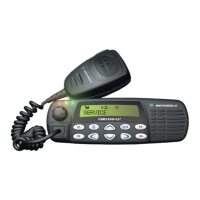Maintenance
The printed-through holes may interconnect multiple layers
of
the printed circuit. Therefore, care
should be exercised to avoid pulling the plated circuit out of the hole.
When soldering near the 20-pin and 40-pin connectors:
Avoid accidentally getting solder
in
the connector.
Be careful not to form solder bridges between the connector pins.
Closely examine your work for shorts due to solder bridges.
Do not exceed
210 degrees C when reworking boards.
Do not exceed 5 degrees temperature ramp rate.
Flexible Circuits
3-3
The flexible circuits are made from a different material than the rigid boards and different techniques
must be used when soldering. Excessive prolonged heat on the flexible circuit can damage the
material. Avoid excessive heat and excessive bending.
For parts replacement, use the ST-1087 R1319A Temperature-Controlled Solder Station with a 600-
700 degree tip for OMPAC (BGA)
CSP,
micro BGA and connectors. Use digital tweezers for all other
component. Use
small diameter solder such as ST-633. The smaller size solder will melt faster and
require less heat to be applied to the circuit.
To
replace a component on a flexible circuit:
1.
Grasp the edge
of
the flexible circuit with seizers (hemostats) near the part to be removed.
2.
Pull gently.
3.
Apply the tip
of
the soldering iron to the component connections while pulling with the seizers.
Note: Do not attempt to puddle out components. Prolonged application of heat may damage the
flexible circuit.
Chip Components
Use either the RLN-4062 R1319A Chipmaster Hot-Air Repair Station or the
Motorola 0180381 B45
Repair Station R1364a digital heated tweezer system for chip component replacement. When using
the 0180381 B45 Repair Station, select the T J-65 mini-thermojet hand piece. On either unit, adjust the
temperature control to 700 degrees
F.
(370 degrees C), and adjust the airflow to a minimum setting.
Airflow can vary due to component density.
To remove a chip component:
1.
Use a hot-air hand piece and position the nozzle
of
hand piece R 1319A approximately 1 /8" (0.3
em) above the component to be removed.
2.
Begin applying the hot
air.
Once the solder reflows, remove the component using the pair
of
twee-
zers contained
in
the SMD tool kit shipped with the R1319A.
3.
Using a solder wick (Motorola P/N 6680334B25) and a soldering iron or a power desoldering sta-
tion, remove the excess
solder from the pads.
To
replace a chip component using a soldering iron:
1.
Select the appropriate micro-tipped soldering iron and apply fresh solder paste (Motorola P/N
6680333E72) to one
of
the solder pads.
2.
Using a pair
of
tweezers, position the new chip component in place while heating the fresh solder.
3.
Once solder wicks onto the new component, remove the heat from the solder.
4.
Heat the remaining pad with the soldering iron and apply solder until it wicks to the component. If
necessary, touch up the first side. All solder joints should be smooth and shiny.

